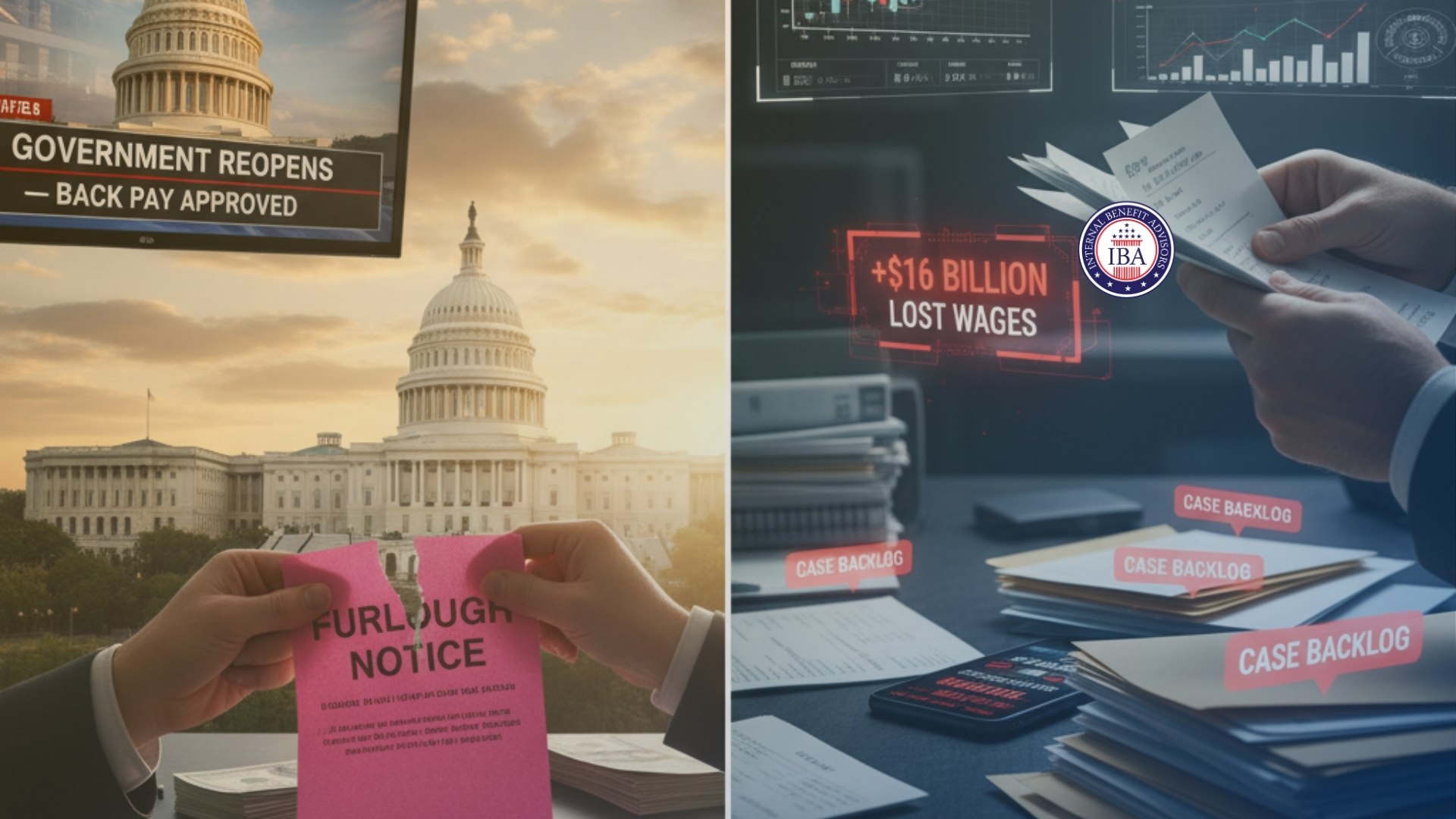The longest government shutdown in U.S. history has finally come to an end. Following the Senate’s critical 60-40 vote to advance the funding package, President Trump signed the bill on November 12, 2025, reopening federal agencies through January 30, 2026. For the federal workforce, this legislation provides three major victories: immediate reopening of agencies, guaranteed back pay for all employees (including those furloughed), and the cancellation of the controversial “shutdown RIFs” (Reductions in Force) that had threatened thousands of careers.
While the immediate crisis has passed, the financial and administrative damage is substantial.
Sound Data: The High Cost of Gridlock The relief of reopening is tempered by the staggering economic toll this shutdown has exacted on both the nation and individual federal employees:
- $18 Billion Economic Hit: The Congressional Budget Office (CBO) estimates that the shutdown reduced the nation’s Real GDP by approximately $18 billion in the fourth quarter of 2025 alone.
- $16 Billion in Lost Wages: By mid-November, federal workers had missed an estimated $16 billion in wages, forcing countless families to drain emergency savings, incur credit card debt, or delay mortgage payments. While back pay is coming, the interest and financial stress incurred are permanent.
- Retirement Backlog Explosion: The Office of Personnel Management (OPM) is facing a massive surge in its retirement backlog, which increased by nearly 50% in October to some 34,600 cases due to the administrative freeze and a spike in “deferred resignations.”
From Relief to Recovery: Your Next Steps
The cancellation of shutdown RIFs and the promise of back pay are massive wins, but they do not erase the instability exposed by this crisis. The backlog at OPM means retirement processing times will likely stretch for months, and the temporary nature of the funding (expiring in January 2026) means we could face this chaos again in just a few months.
This is where the specialized expertise of Internal Benefit Advisors becomes your most critical asset. The “return to normal” is the perfect time to repair your financial foundation before the next potential storm.
Here’s how they help you transition from crisis mode to long-term security:
- Navigating the Retirement Logjam: With OPM’s backlog skyrocketing, submitting a flawless retirement application is more critical than ever. Internal Benefit Advisors can review your paperwork to ensure it doesn’t get stuck in the “error” pile, saving you months of waiting.
- Restoring Your Financial Safety Net: If you drained your emergency fund or took on debt during the shutdown, they can help you build a recovery plan to restore your cash reserves without derailing your long-term retirement goals.
- “RIF-Proofing” for the Future: The threat of RIFs was real, and with funding only guaranteed until January, it could return. They provide a comprehensive analysis of your separation benefits—pension, FEGLI, and TSP—so you know exactly where you stand if job security is threatened again.
- Maximizing Your Back Pay: Receiving a lump sum of back pay can have tax implications. They can help you strategize on how to use that influx effectively, perhaps by catching up on TSP contributions you missed during the furlough.
The government has reopened, but your personal financial recovery is just beginning. Don’t navigate the aftermath alone.
Contact Internal Benefit Advisors today for a post-shutdown consultation and ensure your financial future is secure, no matter what happens in Washington.
References
- FEDweek. “Bill Signed to Reopen Agencies, Provide Back Pay and Cancel Shutdown RIFs.”
- Congressional Budget Office (CBO). (2025). A Quantitative Analysis of the Effects of the Government Shutdown on the Economy.
- Government Executive. “Senate moves shutdown-ending deal that would ensure backpay and unwind some federal layoffs.”
- Internal Benefit Advisors. Retrieved from https://internalbenefitadvisors.com
Senate Passes Bill to Reopen Government
This video provides a concise overview of the Senate’s passing of the funding package, detailing the key provisions for reopening agencies and the lack of certain tax credit extensions, which adds context to the legislative breakthrough discussed in the article.




